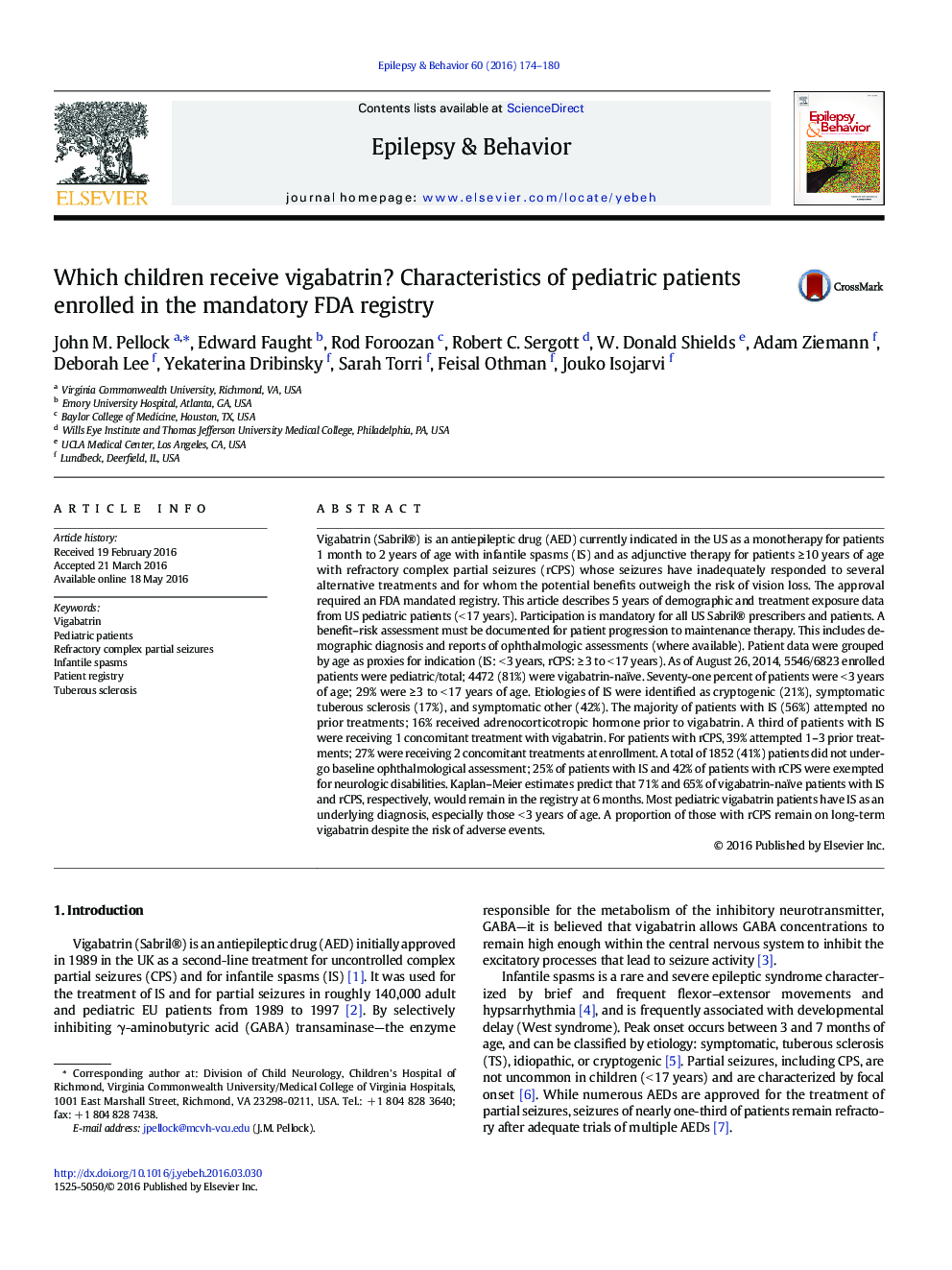| کد مقاله | کد نشریه | سال انتشار | مقاله انگلیسی | نسخه تمام متن |
|---|---|---|---|---|
| 6009894 | 1579831 | 2016 | 7 صفحه PDF | دانلود رایگان |

- A total of 5,546 pediatric patients (<Â 17 years) were enrolled in the FDA-mandated vigabatrin registry
- Most patients (71%) were < 3 years old (IS) and 29% were â¥Â 3 to < 17 years old (rCPS)
- IS patients: 56% attempted no prior treatments; rCPS patients: 39% attempted 1-3 prior treatments
- Forty-one percent of patients did not undergo baseline ophthalmological assessment
- Kaplan-Meier estimates show 71% and 65% of vigabatrin-naive patients with IS and rCPS, respectively, would remain in the registry at 6 months
Vigabatrin (Sabril®) is an antiepileptic drug (AED) currently indicated in the US as a monotherapy for patients 1 month to 2 years of age with infantile spasms (IS) and as adjunctive therapy for patients â¥Â 10 years of age with refractory complex partial seizures (rCPS) whose seizures have inadequately responded to several alternative treatments and for whom the potential benefits outweigh the risk of vision loss. The approval required an FDA mandated registry. This article describes 5 years of demographic and treatment exposure data from US pediatric patients (< 17 years). Participation is mandatory for all US Sabril® prescribers and patients. A benefit-risk assessment must be documented for patient progression to maintenance therapy. This includes demographic diagnosis and reports of ophthalmologic assessments (where available). Patient data were grouped by age as proxies for indication (IS: < 3 years, rCPS: â¥Â 3 to < 17 years). As of August 26, 2014, 5546/6823 enrolled patients were pediatric/total; 4472 (81%) were vigabatrin-naïve. Seventy-one percent of patients were < 3 years of age; 29% were â¥Â 3 to < 17 years of age. Etiologies of IS were identified as cryptogenic (21%), symptomatic tuberous sclerosis (17%), and symptomatic other (42%). The majority of patients with IS (56%) attempted no prior treatments; 16% received adrenocorticotropic hormone prior to vigabatrin. A third of patients with IS were receiving 1 concomitant treatment with vigabatrin. For patients with rCPS, 39% attempted 1-3 prior treatments; 27% were receiving 2 concomitant treatments at enrollment. A total of 1852 (41%) patients did not undergo baseline ophthalmological assessment; 25% of patients with IS and 42% of patients with rCPS were exempted for neurologic disabilities. Kaplan-Meier estimates predict that 71% and 65% of vigabatrin-naïve patients with IS and rCPS, respectively, would remain in the registry at 6 months. Most pediatric vigabatrin patients have IS as an underlying diagnosis, especially those < 3 years of age. A proportion of those with rCPS remain on long-term vigabatrin despite the risk of adverse events.
Journal: Epilepsy & Behavior - Volume 60, July 2016, Pages 174-180